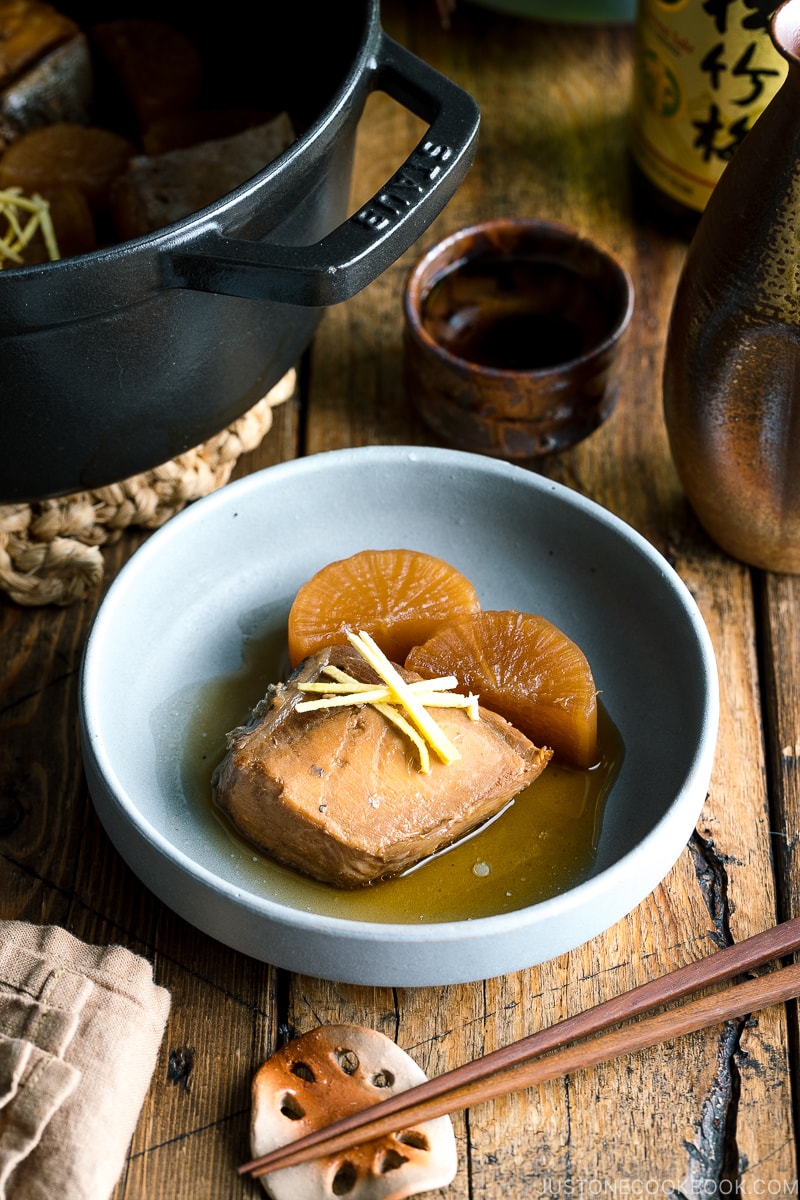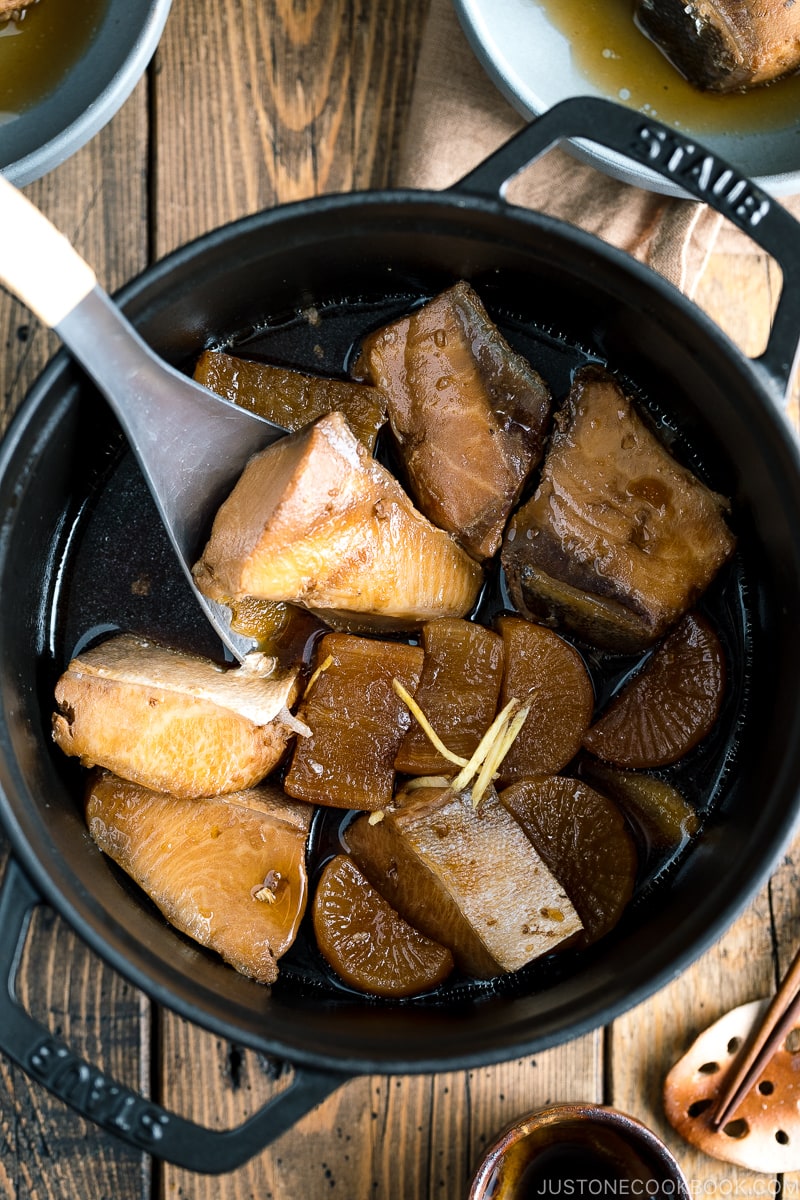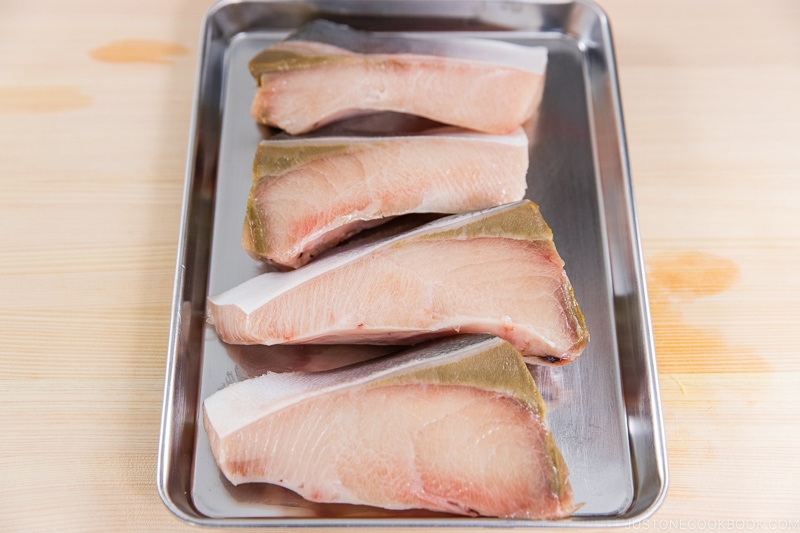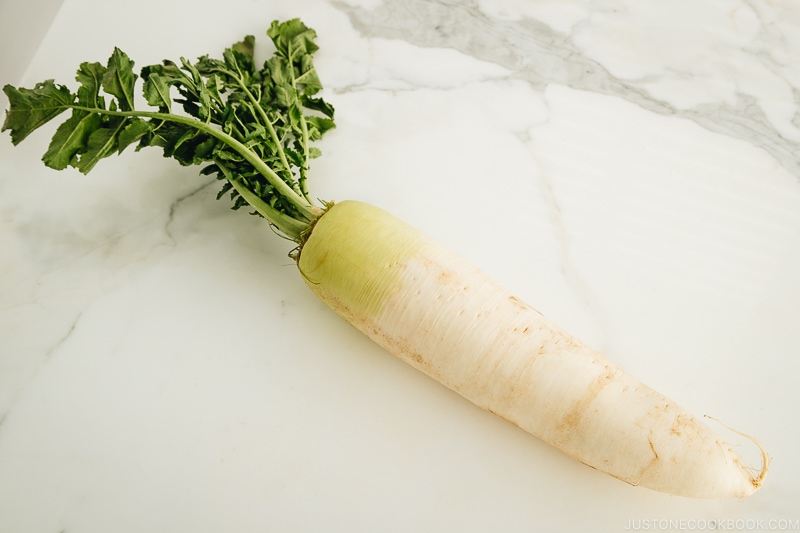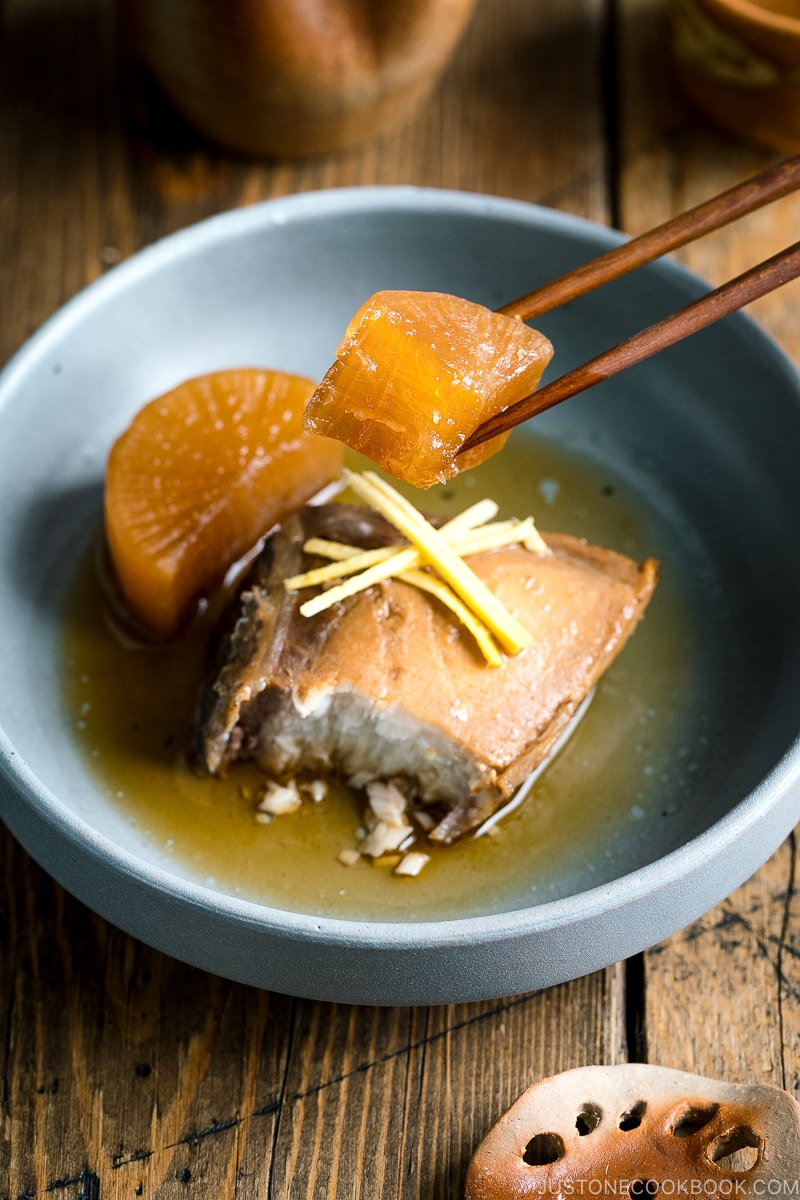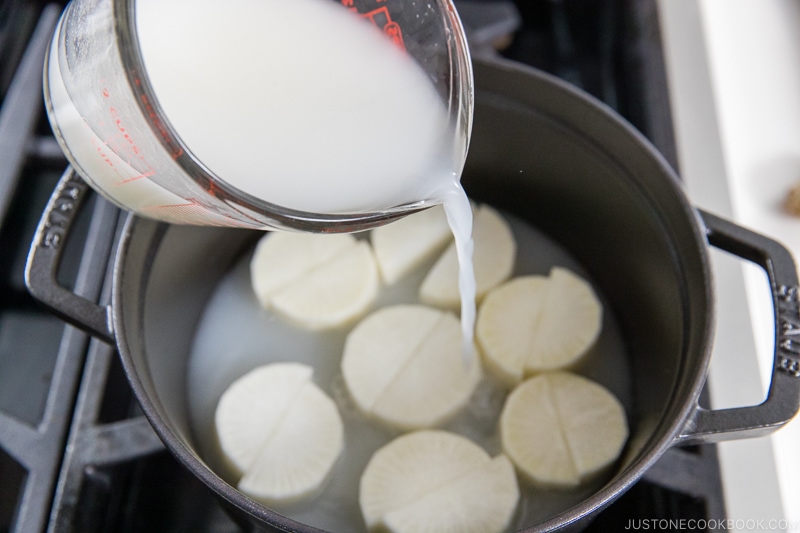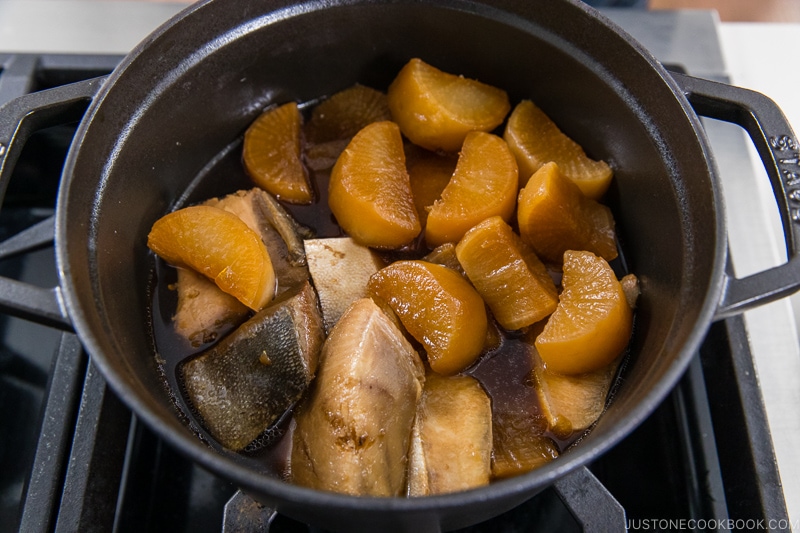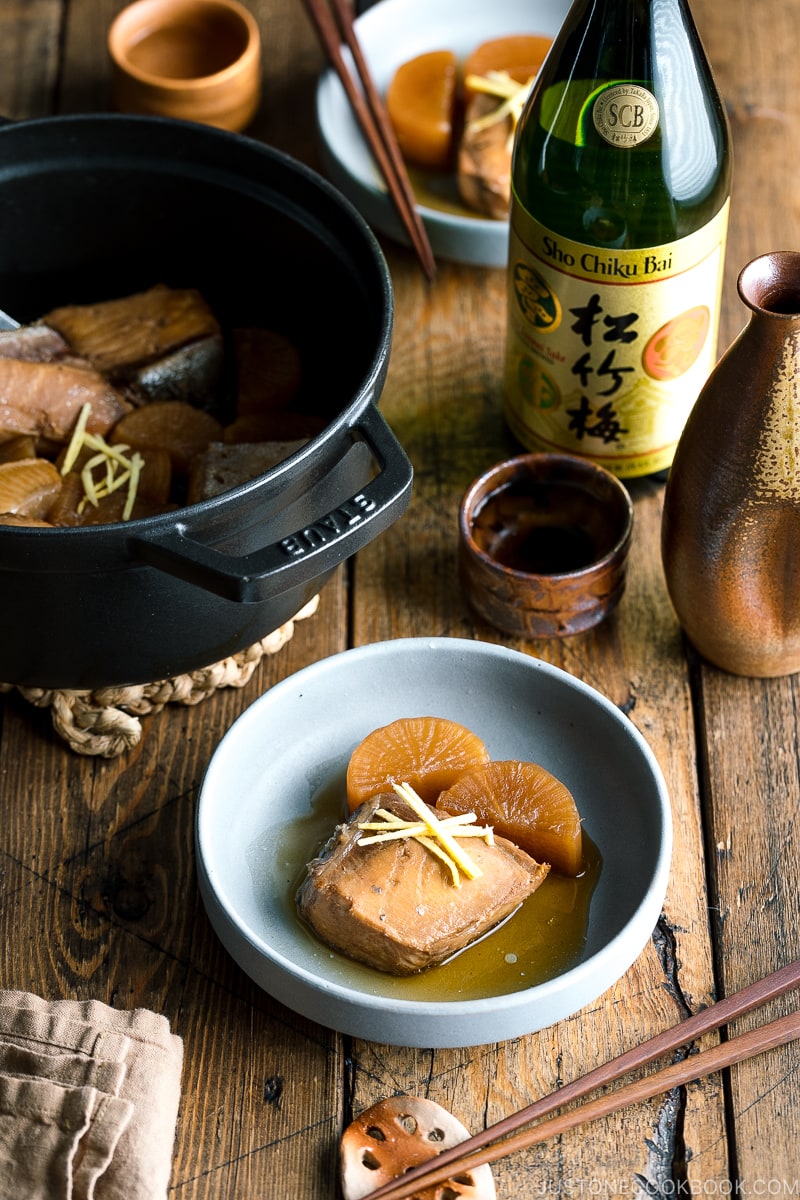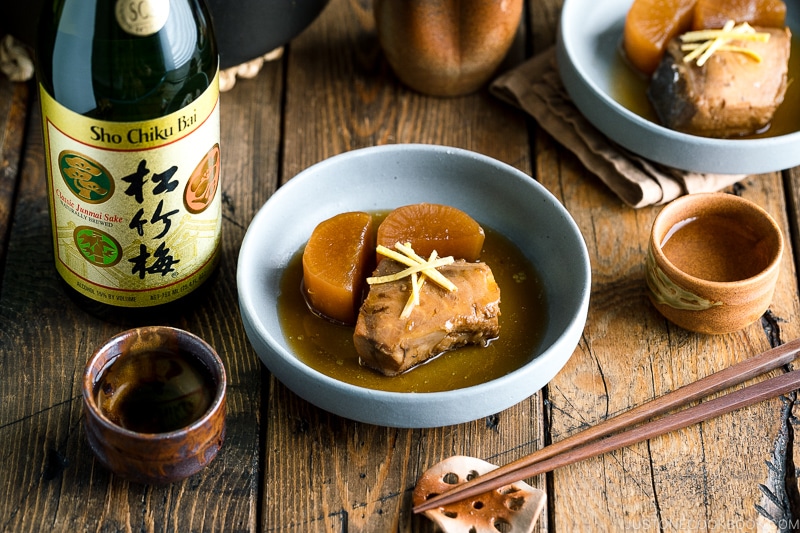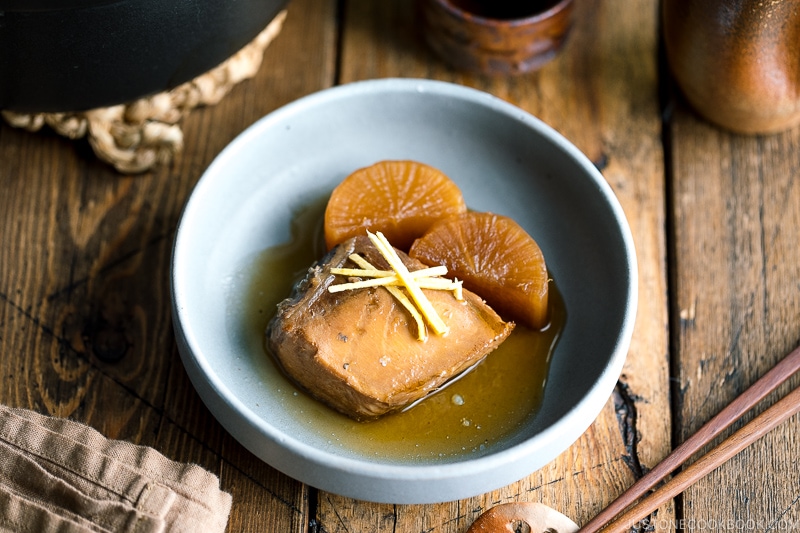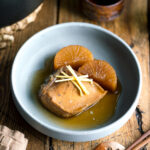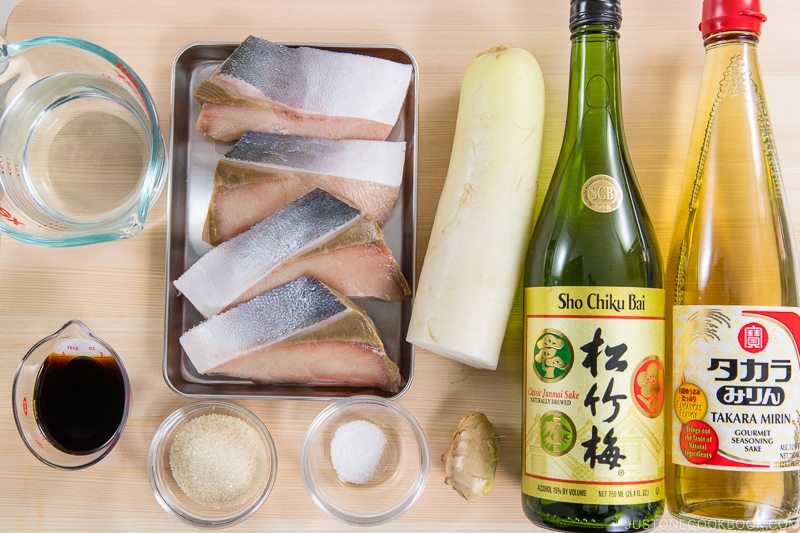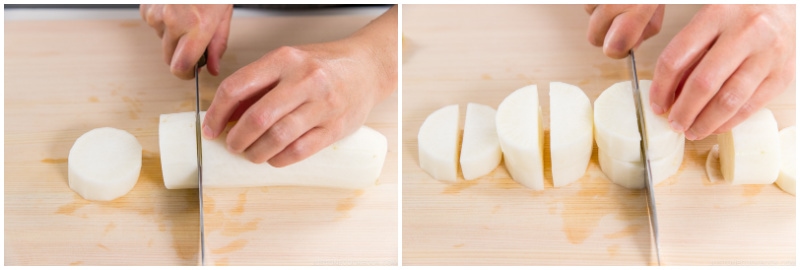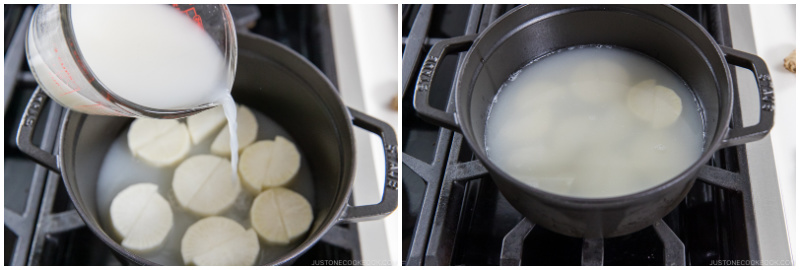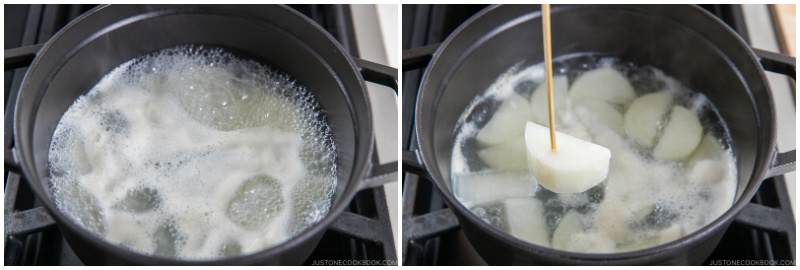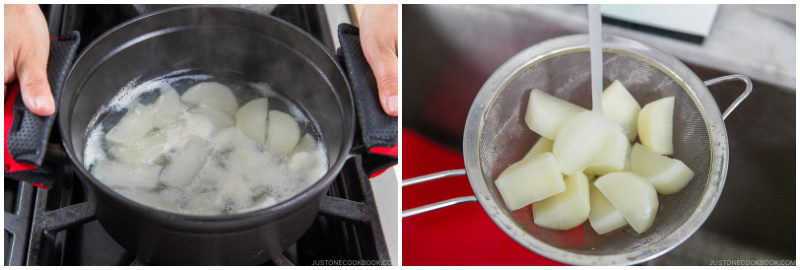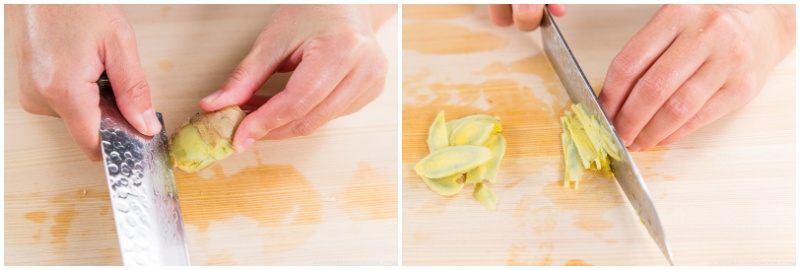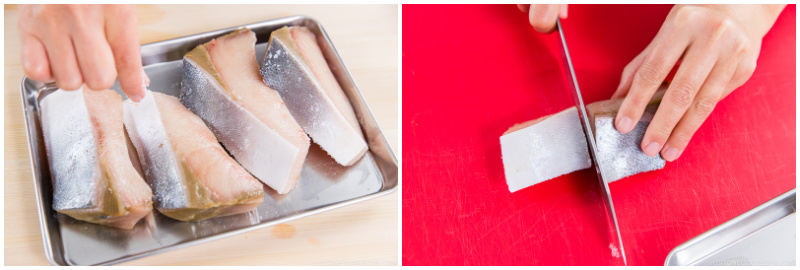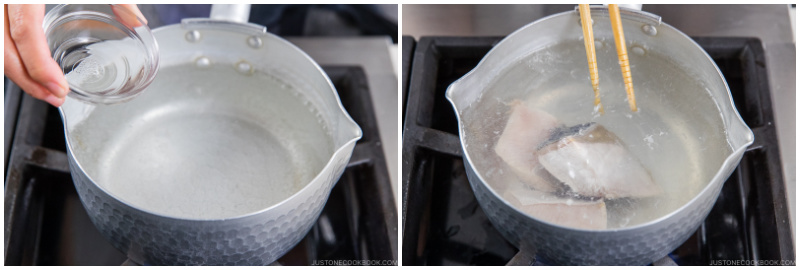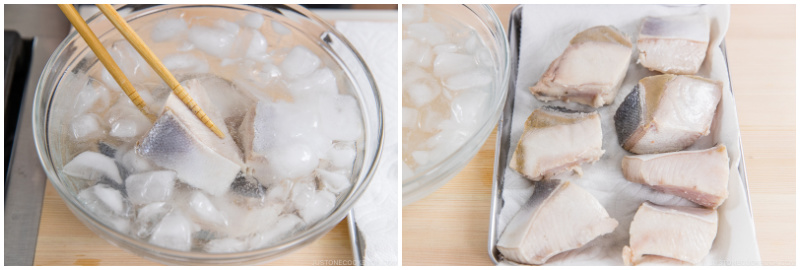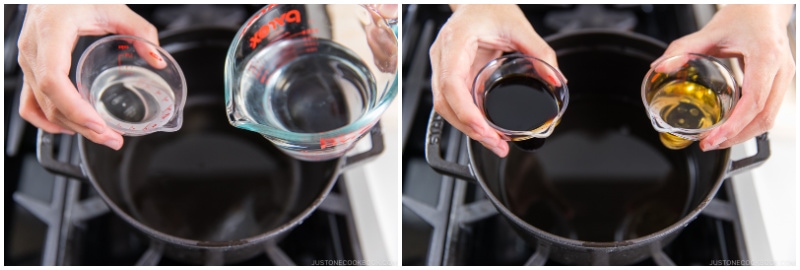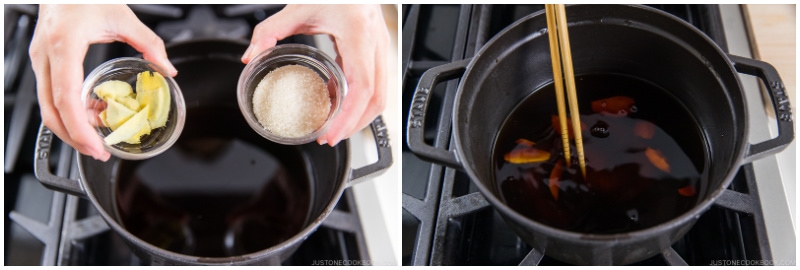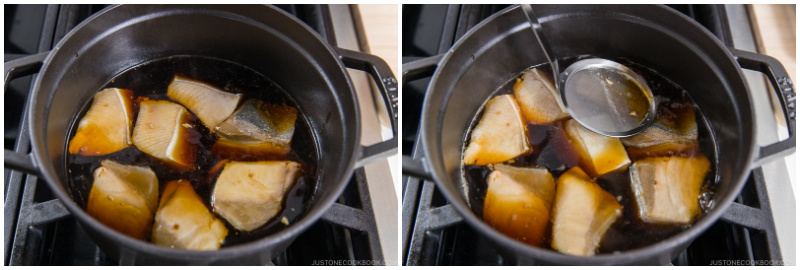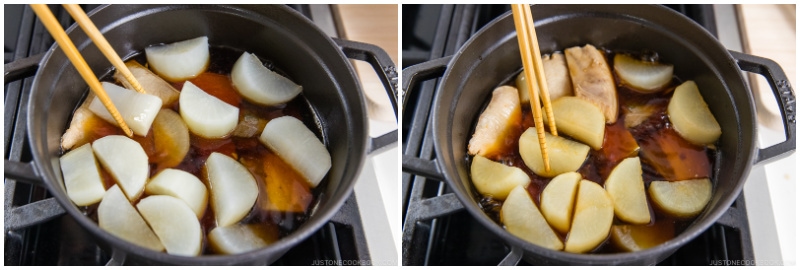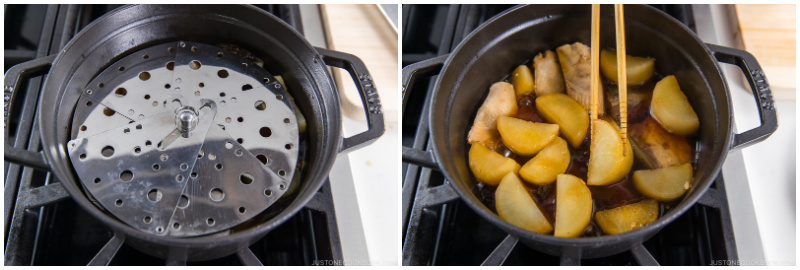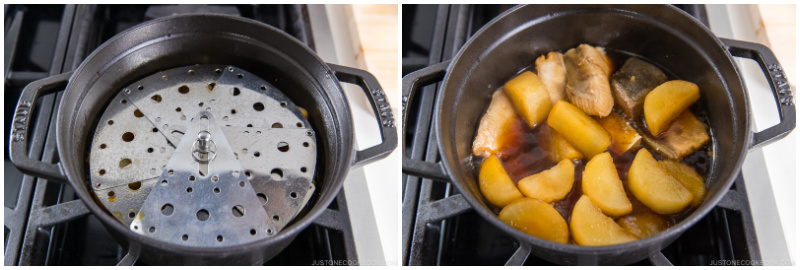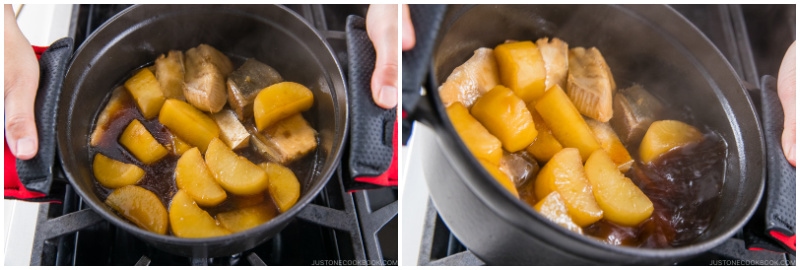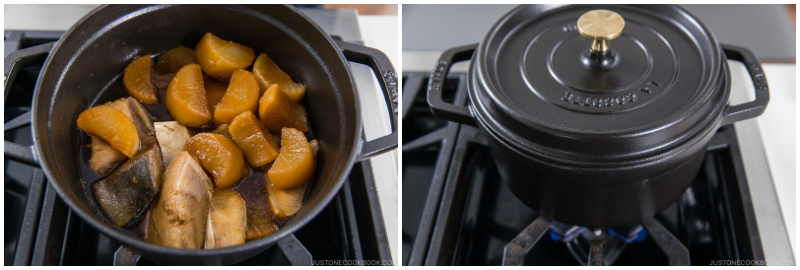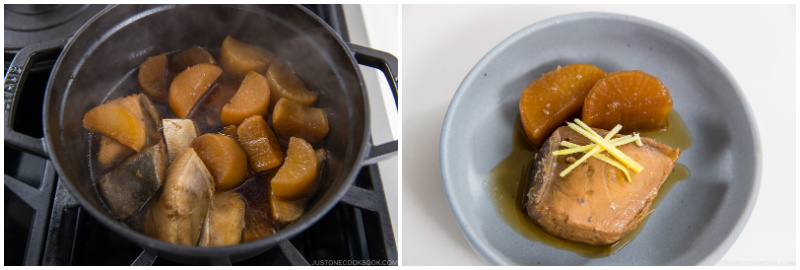Living in California with a mild climate year round, I sometimes forget that instinctual desire to eat seasonal dishes that are truly special in Japan. So I am thankful when readers send in their requests and remind me of a specific food that I have not made for quite some time. Today I’m sharing one of my old winter favorites, Buri Daikon (ブリ大根), or Simmered Yellowtail and Daikon.
What is Buri Daikon
Buri Daikon (ブリ大根) is a simmered dish featuring yellowtail and daikon. Both ingredients are in season during the cold months. The combination of tasty, fatty yellowtail and juicy, sweet daikon radish works amazingly well in soy-infused broth. This classic dish represents the taste of Japanese home cooking. With fresh, seasonal ingredients, it’s easy to achieve perfectly cooked dish.
Quick Overview of The Dish
Flavor: Just like most typical simmered foods, Buri Daikon is seasoned with soy sauce, sake, mirin, and sugar. One major difference is that it does not use dashi (Japanese soup stock). Since yellowtail already packs in a lot of deep flavor, we can keep the broth simple. Ease: Before simmering the yellowtail and daikon, there are a few necessary steps involved. They enforce a clean, delicate taste of the final dish. More about it later. Simmering: The actual simmering time takes only 15-20 minutes. But we’ll let the dish cool down slowly so it develops an enhanced and richer taste.
Learn about Buri (Yellowtail)
The Japanese love seafood, so we can get very serious and detailed with our naming. A good example is a yellowtail – a fish that changes names as it grows! Traditionally, there were different names for wild yellowtail, according to size and age, and to make things more complicated, there were also different names between Tokyo and Osaka. Age (Length) – Tokyo Name / Osaka Name
6 months (10 cm) – Wakashi / Tsubasu 1 year (30 cm) – Inada / Hamachi 3 years (60 cm) – Warasa / Mejiro 4 years (90 cm) – Buri / Buri
These days it’s even more confusing as the Japanese differentiate yellowtail by:
Farm (small) – Hamachi (fatty with soft muscles due to less movement and lighter colored flesh) Wild (small) – Hamachi (firmer flesh and darker color) Wild (large) – Buri
When you’re eating out or shopping, remember the yellowtail “Hamachi” used for sushi and sashimi in the US and Japan is farmed. The larger, older, wild yellowtail “Buri” is caught in the fall in the Japan Sea. During fall/winter time in Japan, seasonal Buri is called Kanburi (寒鰤) and it is nice and fatty, and has so much flavor.
Substitutions for Yellowtail (Buri)
For those who can’t get yellowtail (hamachi/buri) locally, here are my suggestion for substations. Make sure to use fillets with skin-on so that the fish will not disintegrate while cooking.
Amberjack Cod Flounder/Sole Japanese butterfish Mackerel Salmon Sea bream
Learn about Daikon
Daikon or daikon radish is a widely-used root vegetable in Japanese cooking. This winter vegetable is characterized by its long white root and green leaves on top, resembling a pale chunky carrot. In the US, you can find daikon being sold at Japanese or Asian grocery stores, or any well-stocked major grocery stores like Whole Foods or Walmart. Interested to learn more? Visit our Pantry page.
How to Cook Buri Daikon
4 Simple Ingredients
Buri (Yellowtail) Daikon Ginger Condiments: soy sauce, sake, mirin, and sugar
Cooking Process Overview
Tip 1: Cook Daikon with Rice Water
The rice water helps to break down the texture of daikon due to the result of the catalytic activity of enzymes. Daikon becomes white by the action of enzymes. Starch also helps retain the shape of daikon (less likely to break). The bran absorbs the astringency of the daikon.
Tip 2: Let Simmered Food Cool After Cooking
When food is being heated, the moisture of the food is removed from it. While the food is being cooled, the moisture gets absorbed back into the food along with the flavors. This is why many simmered foods and stews like Nikujaga and Oden taste better the following day. If time allows, make a simmered food ahead of time and let it cool slowly giving some time for the food to absorb all the delicious taste.
Pairing Buri Daikon with Classic Junmai Sake Sho Chiku Bai
It is tricky to pair seafood with alcoholic beverages. It’s usually suggested with white wines but the wine could be too dry or too sweet, and the flavor could conflict or overpower the dish. What we find is that the versatile sake pairs extremely well with many types of food including seafood. For this classic Japanese dish buri daikon, we paired it with Sho Chiku Bai Classic Junmai. It’s our favorite sake to cook with but this award-winning sake is fantastic for drinking. The sake’s profile is very well-rounded and balanced, and it can be enjoyed either warm or cold depending on your mood. For buri daikon, since it’s a winter dish we heated up the sake to 113°F/45°C (read how to warm up sake properly). The buri and daikon had been absorbing the sauce for hours so the flavor is very strong. The pairing sake should be intense as well so they go together. When Sho Chiku Bai Classic Junmai is warmed, more flavors are released compared to cold and both the taste and aroma become more robust. The first taste is peppery and sharp, with bold flavors leap at your palates. The strong flavors then subside and transition to a clean soft floral and sweet finish. It was a really good pairing and we highly recommend Sho Chiku Bai Classic Junmai for other seafood dishes. Wish to learn more about Japanese cooking? Sign up for our free newsletter to receive cooking tips & recipe updates! And stay in touch with me on Facebook, Pinterest, YouTube, and Instagram.
